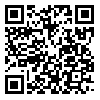Volume 76, Issue 8 (November 2018)
Tehran Univ Med J 2018, 76(8): 543-549 |
Back to browse issues page
Download citation:
BibTeX | RIS | EndNote | Medlars | ProCite | Reference Manager | RefWorks
Send citation to:



BibTeX | RIS | EndNote | Medlars | ProCite | Reference Manager | RefWorks
Send citation to:
Alizadeh S, Aghdami N, Seyedalipour B, Mohammadi P. Investigation the effect of copper nanoparticles on the toxicity and migration of keratinocyte cells. Tehran Univ Med J 2018; 76 (8) :543-549
URL: http://tumj.tums.ac.ir/article-1-9179-en.html
URL: http://tumj.tums.ac.ir/article-1-9179-en.html
Investigation the effect of copper nanoparticles on the toxicity and migration of keratinocyte cells
1- Department of Cellular and Molecular Biology, Faculty of Basic Sciences, University of Mazandaran, Babolsar, Iran. Department of Stem Cells and Developmental Biology, Cell Science Research Center, Royan Institute for Stem Cell Biology and Technology, Academic Center for Education, Culture and Research, Tehran, Iran.
2- Department of Stem Cells and Developmental Biology, Cell Science Research Center, Royan Institute for Stem Cell Biology and Technology, Academic Center for Education, Culture and Research, Tehran, Iran.
3- Department of Cellular and Molecular Biology, Faculty of Basic Sciences, University of Mazandaran, Babolsar, Iran.
4- Department of Stem Cells and Developmental Biology, Cell Science Research Center, Royan Institute for Stem Cell Biology and Technology, Academic Center for Education, Culture and Research, Tehran, Iran. Department of Regenerative Biomedicine, Cell Science Research Center, Royan Institute for Stem Cell Biology and Technology, Academic center for Education, Culture and Research, Tehran, Iran. ,Pmohammadi33@gmail.com
2- Department of Stem Cells and Developmental Biology, Cell Science Research Center, Royan Institute for Stem Cell Biology and Technology, Academic Center for Education, Culture and Research, Tehran, Iran.
3- Department of Cellular and Molecular Biology, Faculty of Basic Sciences, University of Mazandaran, Babolsar, Iran.
4- Department of Stem Cells and Developmental Biology, Cell Science Research Center, Royan Institute for Stem Cell Biology and Technology, Academic Center for Education, Culture and Research, Tehran, Iran. Department of Regenerative Biomedicine, Cell Science Research Center, Royan Institute for Stem Cell Biology and Technology, Academic center for Education, Culture and Research, Tehran, Iran. ,
Abstract: (3070 Views)
Background: Re-epithelialization has an important role in skin wound healing. Delays in re-epithelialization are more likely to create the chronic wound. Impaired wound healing leads to a large burden of morbidity and mortality. Current treatments based on the use of autografts, allografts and xenografts, suffer from limitations such as, quantity of donor skin available, donor-site infection, potential risk of disease transmission and rejection of the graft. Given this problems, nanomaterial such as copper nanoparticles has attracted considerable research interest because of their high surface area to volume ratio, high stability, clinical safety, and antibacterial effects. Epithelialization involves keratinocyte migration and proliferation to the wound site. Therefore, this study was conducted to investigate the effect of copper nanoparticles on keratinocyte cell migration and proliferation.
Methods: This experimental study was performed in Royan Institute, Tehran in 2016. In this study we investigated the effect of copper nanoparticles on viability, migration and proliferation of keratinocyte cells. Cultured human foreskin Keratinocyte cells were exposed to various concentration (1, 10 and 100 µmol) and sizes (40 and 80 nm) of copper nanoparticles for 24, 48 and 72 hours. The copper nanoparticles toxicity was examined by MTS assay. Cell migration has also been investigated with the Scratch assay.
Results: The results showed that the 1, 10 and 100 µmol concentrations of 40 and 80 nm copper nanoparticles were not toxic for cultured human foreskin keratinocyte cells after 24h. It was also found keratinocyte cell proliferation was increased by 1 µmol concentration of 80 nm copper nanoparticles after 72h. The results of the Scratch assay showed that the 1 µmol concentration of 80 nm copper nanoparticles significantly (P<0.05) increased keratinocyte cell migration compared to deionized water as of control group after 24h.
Conclusion: It seems the 1 µmol concentration of 80 nm copper nanoparticle could stimulate keratinocyte cell migration and proliferation. However, in vivo studies conducted on animal model wound healing subjects are needed for determining re-epithelialization.
Methods: This experimental study was performed in Royan Institute, Tehran in 2016. In this study we investigated the effect of copper nanoparticles on viability, migration and proliferation of keratinocyte cells. Cultured human foreskin Keratinocyte cells were exposed to various concentration (1, 10 and 100 µmol) and sizes (40 and 80 nm) of copper nanoparticles for 24, 48 and 72 hours. The copper nanoparticles toxicity was examined by MTS assay. Cell migration has also been investigated with the Scratch assay.
Results: The results showed that the 1, 10 and 100 µmol concentrations of 40 and 80 nm copper nanoparticles were not toxic for cultured human foreskin keratinocyte cells after 24h. It was also found keratinocyte cell proliferation was increased by 1 µmol concentration of 80 nm copper nanoparticles after 72h. The results of the Scratch assay showed that the 1 µmol concentration of 80 nm copper nanoparticles significantly (P<0.05) increased keratinocyte cell migration compared to deionized water as of control group after 24h.
Conclusion: It seems the 1 µmol concentration of 80 nm copper nanoparticle could stimulate keratinocyte cell migration and proliferation. However, in vivo studies conducted on animal model wound healing subjects are needed for determining re-epithelialization.
Type of Study: Original Article |
Send email to the article author
| Rights and permissions | |
 |
This work is licensed under a Creative Commons Attribution-NonCommercial 4.0 International License. |





